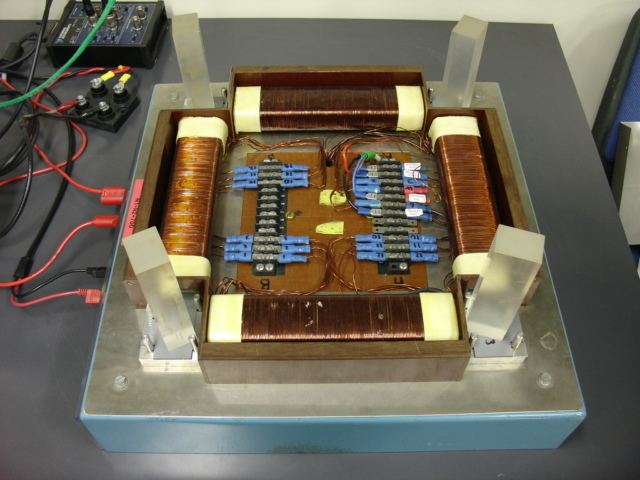 | ||
An Epstein frame or Epstein square is a standardised measurement device for measuring the magnetic properties of soft magnetic materials, especially used for testing of electrical steels.
The International Standard for the measurement configuration and conditions are defined by the standard IEC 60404-2:2008 Magnetic materials - Part 2: Methods of measurement of the magnetic properties of electrical steel sheet and strip by means of an Epstein frame published by International Electrotechnical Commission.
An Epstein frame comprises a primary and a secondary winding. The sample under test should be prepared as a set of a number of strips (always a multiple of four) cut from electrical steel sheet or ribbon. Each layer of the sample is double-lapped in corners and weighted down with a force of 1 N (see photo).
The power losses are measured by means of a wattmeter method in which the primary current and secondary voltage are used. During the measurement, the Epstein frame behaves as an unloaded transformer.
Power loss, Pc, is calculated as:
where:
Specific power loss, Ps, is calculated as:
where:
If all conditions are as defined in the standard, the standard deviation of the reproducibility of the values is not greater than 1.5% up to 1.5 T for non-oriented electrical steel and up to 1.7 T for grain-oriented electrical steel.
